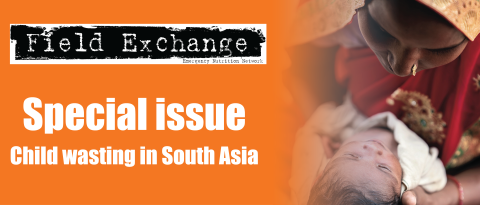Factors associated with wasting among children under five years old in South Asia: Implications for action
Research snapshot1
The continued high prevalence and burden of child wasting in South Asia is an urgent policy priority. The region’s progress towards achieving the Sustainable Development Goals’ global target for wasting reduction requires the scale-up of evidence-based policies and programmes. Information on the determinants of wasting is an important component of this evidence base.
The analysis used data from national surveys in Bangladesh, India, the Maldives, Nepal, Pakistan and Afghanistan to examine the factors associated with wasting in children aged 0-59 months in each country, using multivariate logistic regression. The prevalence of wasting varied from 9% in Afghanistan to 21% in India, while over 5% of children in Bangladesh, India and Pakistan were both wasted and stunted. Two factors that were associated with an increased risk of wasting in all six countries were the child being aged under six months and maternal thinness (the mother having a body mass index <18.5 kg/m2). Other factors that were associated with wasting in one or more countries included those pertaining to the child (later birth order and being male), the mother (illiteracy and short maternal stature) and the household (household poverty and lack of an improved water source). Previous research has found that all of these factors are associated with an increased risk of stunting in South Asia.
The current scale of child wasting in South Asia and its shared risk factors with stunting demand much greater investment in preventive interventions to reduce the prevalence of both wasting and stunting, while ensuring treatment is available to all wasted children who need it. Preventive interventions should focus on improving the nutrition of adolescents and women before and during pregnancy to prevent low birth weight and support the early initiation of breastfeeding and exclusive breastfeeding. There is also need for greater attention to women’s education; empowerment and postnatal nutrition; quality complementary foods and hygienic feeding practices; safe water and sanitation; and nutrition-sensitive public sector actions across sectors.
1 Harding, K. L., Aguayo, V. M., & Webb, P. (2018). Factors associated with wasting among children under five years old in South Asia: Implications for action. PLoS ONE 13(7): e0198749. https://doi.org/10.1371/journal.pone.0198749


